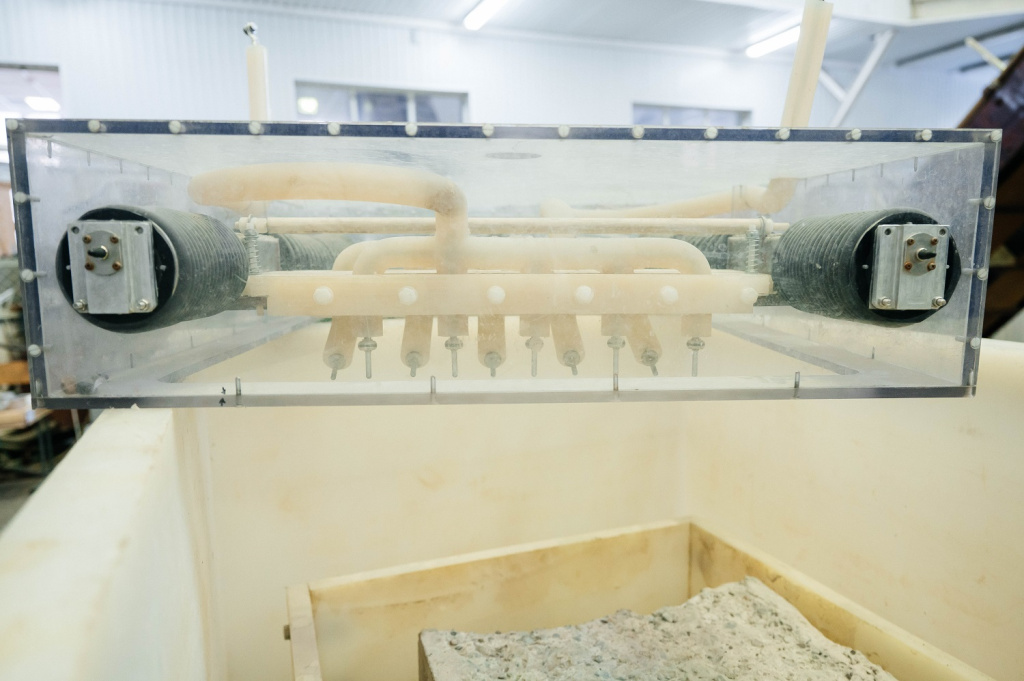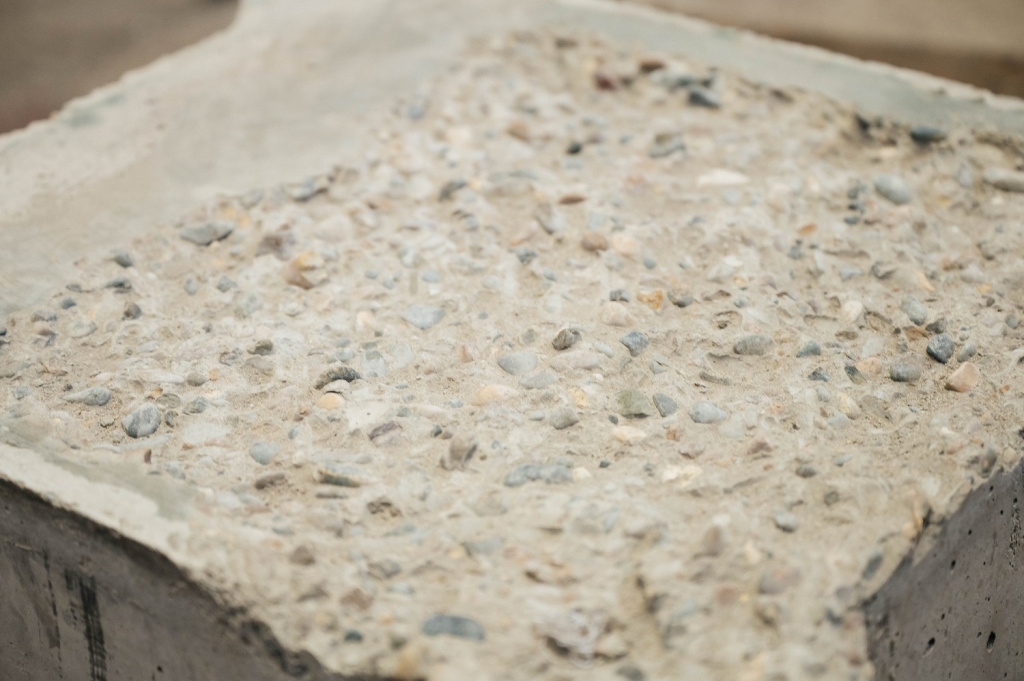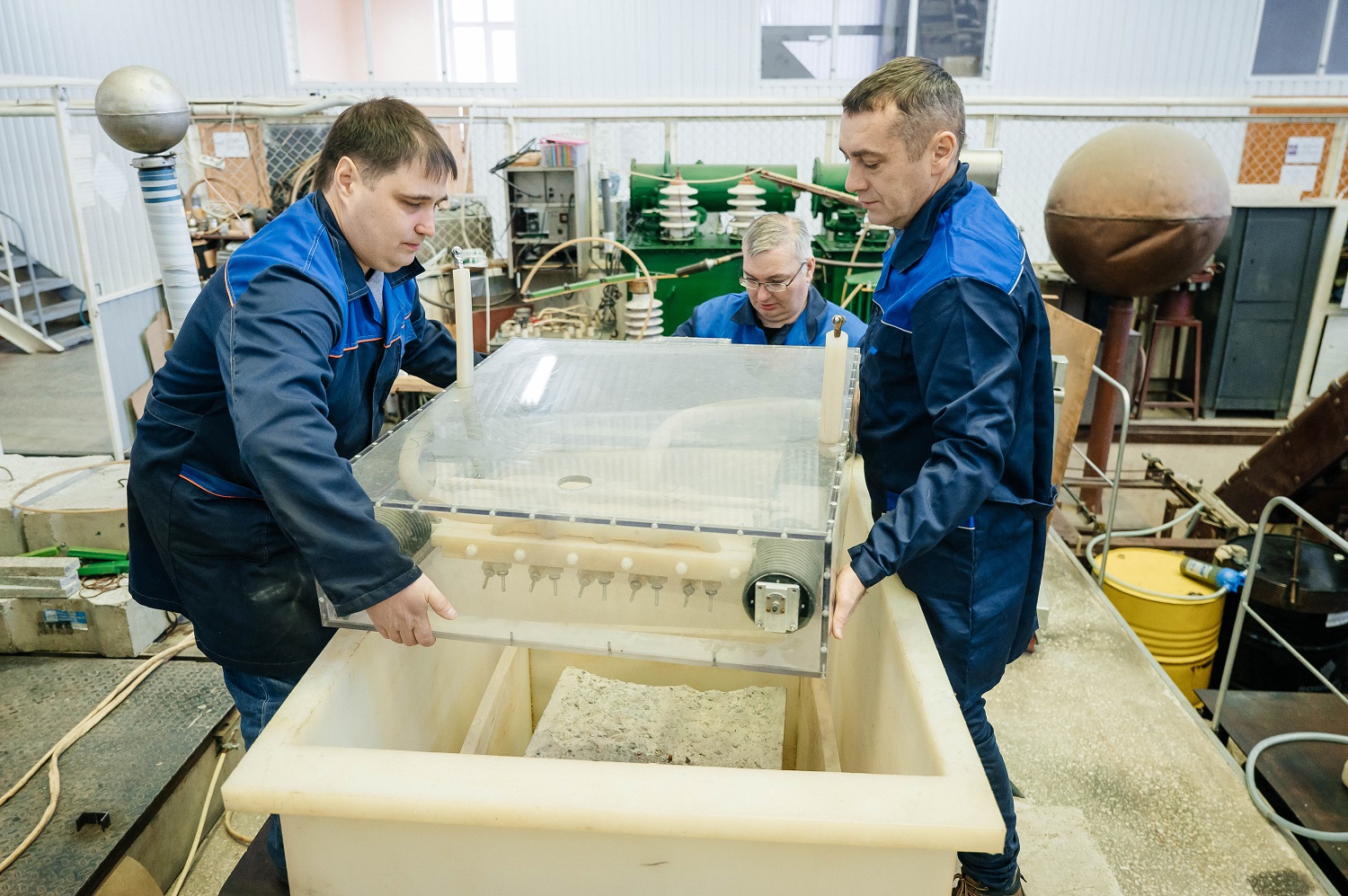Radiation-contaminated concrete structures are dismantled during the decommissioning of the NRHF. To reduce the volume of radioactive waste requiring handling, conditioning and further final containment, it is necessary to arrange decontamination of radiation-contaminated concrete. When using this method, the concrete is cleaned by pulsed electrical discharges, which splinter the surface layer of concrete to the desired depth.
The technology of electric discharge decontamination of concrete structures has a number of advantages over mechanical methods - the absence of radioactive dust and environmental cleanliness of the process, the absence of wear of cutting and other abrasive tools, and relatively low energy consumption. In addition, when destroying reinforced concrete products, the reinforcement frame is not deformed, therefore embedded parts and concrete debris can be reused.

"The application of electric discharge decontamination technology for concrete is promising. One example is the decommissioning of nuclear power plants. This can be explained by the fact that nuclear power plants have building and structures made of reinforced concrete, concrete and bricks, similar to those at nuclear fuel cycle facilities. The results of this work will be used by the enterprises at the stage of decommissioning of nuclear and radiation hazardous facilities in Russia and abroad", - said Eduard Nikitin, Director for decommissioning of YARO and RAW management of JSC TVEL.

"During the tests, the laboratory machine performed well. It was able to remove a layer of concrete to a certain depth. The main advantage of electro-discharge technology over mechanical technology is low wear of electrodes. They wear much slower than the cutting edges of mechanical tools. In addition, high material removal rates can be achieved. An electrical impulse is only a few microseconds. We are continuing a series of experiments with simulators of radioactive substances to prove the applicability of the method on an industrial scale," adds Artem Yudin, project manager and researcher at TPU's R&D Laboratory for Pulse-Beam, Electric Discharge and Plasma Technologies.
Reference
TVEL fuel company of Rosatom (Fuel Division of Rosatom State Corporation) includes enterprises for fabrication of nuclear fuel, uranium conversion and enrichment, production of gas centrifuges, as well as research and engineering organizations. As the sole supplier of nuclear fuel for Russian NPPs, TVEL provides fuel for more than 70 power reactors in 15 countries, research reactors in nine countries, and transport reactors of the Russian nuclear fleet. Every sixth power reactor in the world runs on TVEL fuel. Rosatom's Fuel Division is the world's largest producer of enriched uranium and the leader of the global stable isotope market.
Since 2019, JSC TVEL has been the industry integrator for the business area "Decommissioning of Nuclear and Radiation Hazardous Facilities and Management of Associated Radioactive Waste". The integrator brings together the skills and references of the industry, develops and tests new technologies, and carries out all stages of the work, from the preparation and execution of the decommissioning to the management of the associated RAW and the rehabilitation of the sites.
